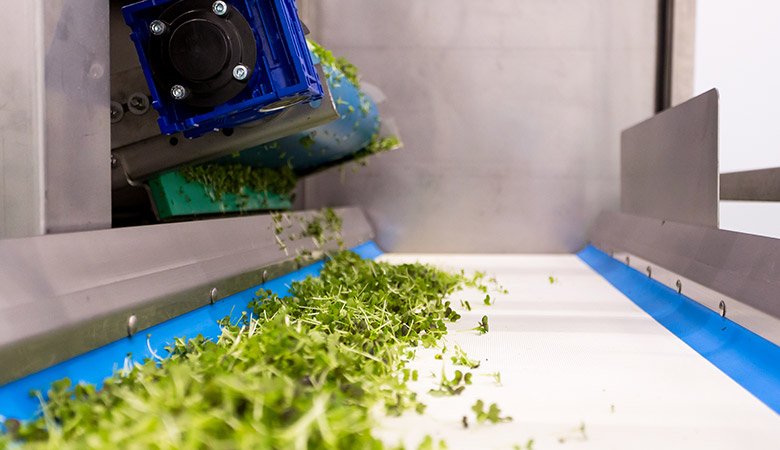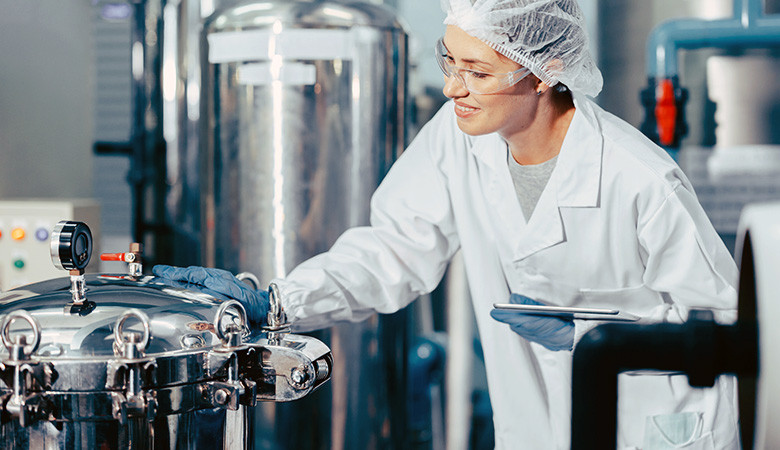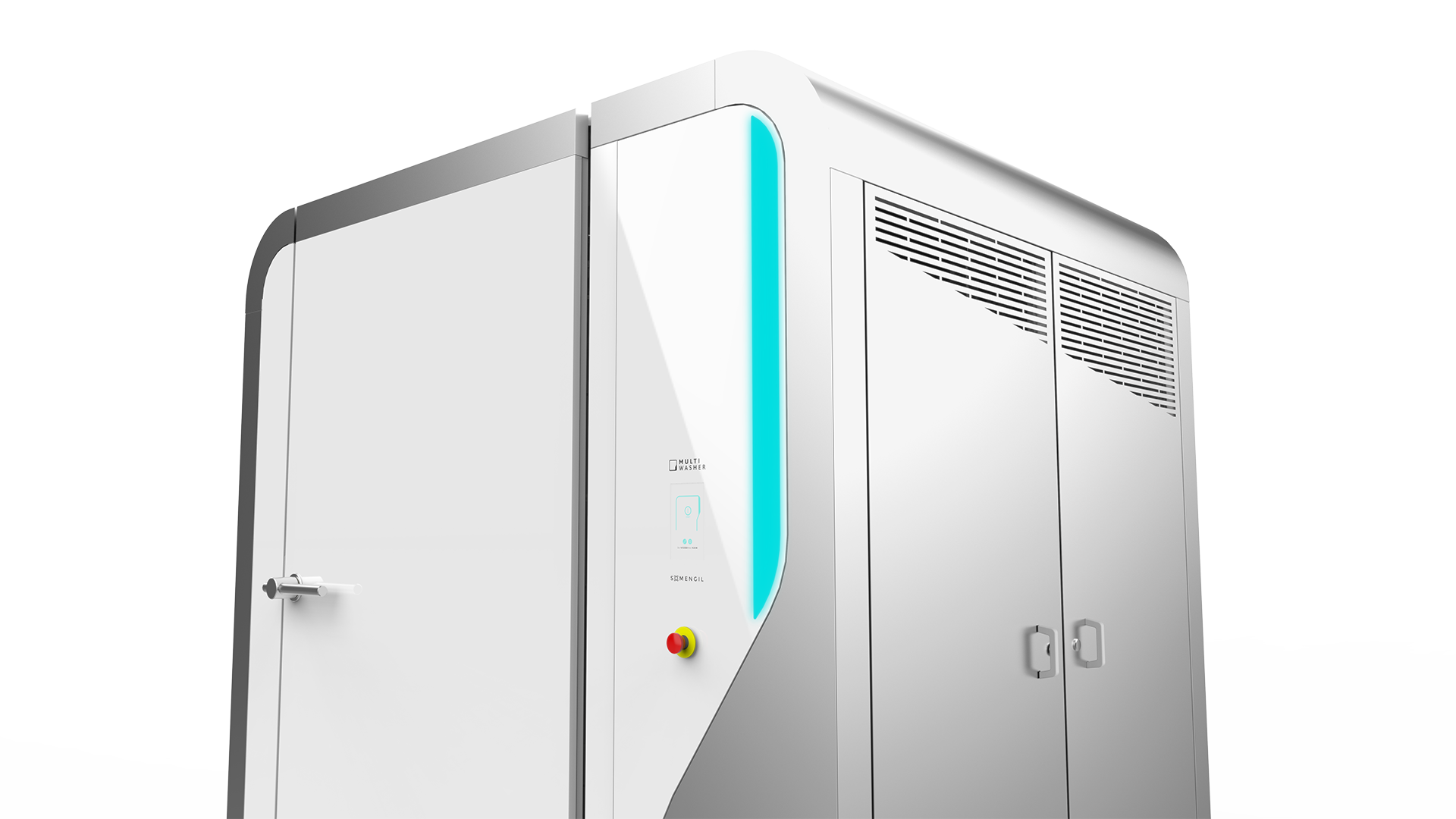Gestão / Artigos
Lean Manufacturing in the food industry: more than a buzzword
Lean Manufacturing helps companies in the food industry be more competitive and innovative. But why do so many companies struggle and what is the best approach?

 9 minutos de leitura
9 minutos de leitura
2021-12-23 18:57:51
Lean Manufacturing helps companies in the food industry be more competitive and innovative. But why do so many companies struggle and what is the best approach?
In the depths of the rainforests of India, China and Indonesia grows a plant that makes the world go round–tea.
The second most consumed drink on the planet (second only to water) has never been more desirable to palates from Turkey to the UK. As a result, a logistics network spans the world, linking producing countries to consumers.
Applying the principles of Lean Manufacturing to a value chain with these characteristics is an enormous challenge. To survive and prosper, companies like AlphaTea are fighting a never ending battle. The enemy is waste, and the aim, operational excellence.
In the world of tea, as in many other food sectors, Lean Manufacturing has long been more than a buzzword. Understanding and implementing this method correctly is an essential competitive advantage to reduce costs, increase productivity, improve quality and, therefore, increase sales.
This is what Lean Manufacturing means and how to implement it.
What does Lean Manufacturing mean?
The purpose of Lean Manufacturing is to eliminate 7 types of waste (or Muda, in the Japanese original). These include movement of people and material, stock, waiting, over-processing, overproduction and rework.
By identifying and eliminating each of these problems, companies can do more with the same resources. But implementing Lean Manufacturing goes far beyond cost reduction. This is a matter of survival.
Lean Manufacturing enables companies to be more competitive and to develop innovative processes. These innovations can range from a new production method to changes in techniques, equipment or software, or improved logistics.
However, implementation in the food sector is still lower than that of other industries.
Why is that?
Lean Manufacturing's unique challenges in the food industry
The food sector represents a unique challenge for implementing Lean Manufacturing for several reasons.
The first reason is the strategic importance of the industry. Assuring a stable supply of food is an essential function of governments. And no other sector serves so many "customers"–the entire human population–as the food industry. As a result, the level of regulation is high and makes change more complex.
But there are other challenges specific to the food sector. Manufacturers constantly tempt consumers to try new products. New trends, such as gluten-free and organic products, increase the complexity of production.
Typically, production in the food area is done in large batches, which makes the implementation of improvements more challenging and expensive. Besides these factors, there is high perishability of products, complex methods of production, variable raw materials and unpredictable demand.
But there are good reasons to implement Lean Manufacturing in the food area.
How to implement Lean Manufacturing in the food industry?
Despite the challenges, applying lean manufacturing principles and tools has the potential to reduce waste in the food industry, and make companies more resilient and innovative. Eliminating waste and value-added tasks reduces costs and frees up resources for innovation.
But what's the best approach? What is the most appropriate process for an industry with a high level of regulation, subject to market trends and with high logistical complexity?
These are some of the best practices to follow.
Be the agent of change
Leadership plays a key role in any transformation, and Lean Manufacturing is no exception. Leaders are the engine of change. To succeed, they must go beyond tacit approval, and monitor the changes and improvements on the shop floor. Crucially, they should explain and clarify the purpose of the transformation and ensure that the team knows the tools and techniques, but also understands the "whys". Lean Manufacturing is not a project, but a cultural change that requires the active involvement of the management team.
Make knowledge the foundation of change
Not all managers are familiar with continuous improvement concepts such as 5S, Value Stream Mapping, or Lean – even if they won’t admit it. For example, Overall Equipment Efficiency (OEE) is an essential metric for equipment efficiency, but still sparsely implemented in food companies.
Lack of know-how is a barrier to change. Make sure everyone is properly informed about the fundamental concepts. Only then is it possible to create a Lean culture, diagnose problems and devise solutions.
Find the right timing
Lean Manufacturing can originate resistance to change. But in the right timing–like a change in the market – it's easier to introduce a sense of urgency and create a window of opportunity for profound transformations. It will be up to each leader to identify the opportune moment, define a change narrative and be prepared to persuade others that the time to improve has come.
This is what the company Embutidos Ibisma did, with the help of MultiWasher. In a crisis, the management team improved the washing processes renovate equipment to increase productivity. As a result, the production team gained more time for value-added tasks.
Map invisible processes
Identifying waste requires deep diving in complex production processes that are not immediately visible.
Value Stream Mapping is a Lean Manufacturing technique that follows the production journey of a product from supplier to customer. Each step of the process is represented visually, with post-its or diagram boxes.
Such map reveals waste. Value Stream Mapping makes it easier to identify inefficiencies, such as bottlenecks that prevent work from flowing. It allows anyone to see the stock accumulation points and tasks that go against the basic rules of employee ergonomics.
At Somengil, we follow a similar mechanics to study our customers' washing processes before proposing solutions. This Consultative Sales method distinguishes us from the competition and allows us to design customized solutions for each client. In the end, we draw a new map, representing the desired status map, and adapt our industrial washing machines to the optimized flow.
Define borders
Lean Manufacturing is an interactive process. It is unnecessary to have a grand strategy or a 5-year plan. Instead, evolution takes place step by step, in a PDCA cycle (Plan - Do - Check - Act): identify waste, design solutions, implement, check and repeat.
To get started, choose an important and visible activity that will serve as an example to the rest of the team. Start with quick-wins that will drive the most immediate results to build confidence. Industrial washing processes are a good example. Lean Manufacturing can represent significant savings in companies where water, energy or detergent consumption is high.
Once the team achieves these first results, expand the scope. As news of the Lean Manufacturing application extends to other areas of the company, take advantage of the opportunity to identify more problems and offer solutions to remove waste and streamline processes.
MultiWasher, machines designed for Lean Manufacturing
The core concept of Lean Manufacturing is the identification and elimination of waste in all areas of companies, every day and with the involvement of everyone.
We created MultiWasher with this principle in mind. This state-of-the-art industrial washing machine was designed for enterprises in which wash quality and machine performance are critical success factors.
MultiWasher uses 2/3 less water than other industrial washing solutions, 70% less detergent and is 100% environmentally friendly. It allows greater flexibility to respond to new market trends–with the MultiWasher, you can wash everything from pots, plates, trays, supermarket carts and more. MultiWasher is already improving washing processes in the Meat and Fish, Bakeries and Pastry, Dairy, Retail, Catering and Fruit and Vegetable industries.
Contact our team or schedule a custom webinar to see the difference.
Também pode gostar

Gestão / ArtigosArtigos
5 environmental and safety regulations that every company should know about
Environmental and safety regulations protect companies and the environment. Discover 5 that every organization should know about.
Postado em 2024-03-08

Gestão / ArtigosArtigos
Resource management: what is it and how to do it right
Learn how efficient resource management can enhance productivity, reduce costs, promote sustainability, and avoid unforeseen hiccups.
Postado em 2024-04-23

Gestão / ArtigosArtigos
SIPOC: What it is and how to use it
To improve a process, you first need to understand it. And one of the best ways to do so is with SIPOC. Find out how to use it.
Postado em 2023-04-10






















 Português
Português English (UK)
English (UK) English (USA)
English (USA) Français
Français Español
Español Deutsch
Deutsch